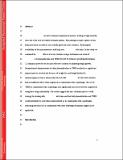Por favor, use este identificador para citar o enlazar a este item:
http://hdl.handle.net/10261/156923COMPARTIR / EXPORTAR:
 SHARE SHARE
 CORE
BASE CORE
BASE
|
|
| Visualizar otros formatos: MARC | Dublin Core | RDF | ORE | MODS | METS | DIDL | DATACITE | |

| Título: | Administration of zinc chelators improves survival of mice infected with Aspergillus fumigatus both in monotherapy and in combination with caspofungin |
Autor: | Laskaris, Paris; Atrouni, Ahmad; Calera, José Antonio CSIC ORCID; d'Enfert, Christophe; Munier-Lehmann, Hélène; Cavaillon, Jean-Marc; Latgé, Jean Paul; Ibrahim-Granet, Oumaima | Fecha de publicación: | 2016 | Editor: | American Society for Microbiology | Citación: | Antimicrobial Agents and Chemotherapy 60(10): 5631-5639 (2016) | Resumen: | Aspergillus fumigatus can infect immunocompromised patients, leading to high mortality rates due to the lack of reliable treatment options. This pathogen requires uptake of zinc from host tissues in order to successfully grow and cause virulence. Reducing the availability of that micronutrient could help treat A. fumigatus infections. In this study, we examined the in vitro effects of seven chelators using a bioluminescent strain of A. fumigatus. 1,10-Phenanthroline and N,N,N′,N′-tetrakis(2-pyridylmethyl) ethane-1,2-diamine (TPEN) proved to be the chelators most effective at inhibiting fungal growth. Intraperitoneal administration of either phenanthroline or TPEN resulted in a significant improvement in survival and decrease of weight loss and fungal burden for immunosuppressed mice intranasally infected with A. fumigatus. In vitro both chelators had an indifferent effect when employed in combination with caspofungin. The use of TPEN in combination with caspofungin also significantly increased survival compared to that when using these drugs individually. Our results suggest that zinc chelation may be a valid strategy for dealing with A. fumigatus infections and that both phenanthroline and TPEN could potentially be used either independently or in combination with caspofungin, indicating that their use in combination with other antifungal treatments might also be applicable. | Versión del editor: | https://doi.org/10.1128/AAC.00324-16 | URI: | http://hdl.handle.net/10261/156923 | DOI: | 10.1128/AAC.00324-16 | Identificadores: | doi: 10.1128/AAC.00324-16 e-issn: 1098-6596 issn: 0066-4804 |
| Aparece en las colecciones: | (IBFG) Artículos |
Ficheros en este ítem:
| Fichero | Descripción | Tamaño | Formato | |
|---|---|---|---|---|
| caspofungin.pdf | 3,36 MB | Adobe PDF |  Visualizar/Abrir |
CORE Recommender
PubMed Central
Citations
20
checked on 07-abr-2024
SCOPUSTM
Citations
33
checked on 15-abr-2024
WEB OF SCIENCETM
Citations
31
checked on 23-feb-2024
Page view(s)
241
checked on 16-abr-2024
Download(s)
469
checked on 16-abr-2024
Google ScholarTM
Check
Altmetric
Altmetric
Artículos relacionados:
NOTA: Los ítems de Digital.CSIC están protegidos por copyright, con todos los derechos reservados, a menos que se indique lo contrario.
